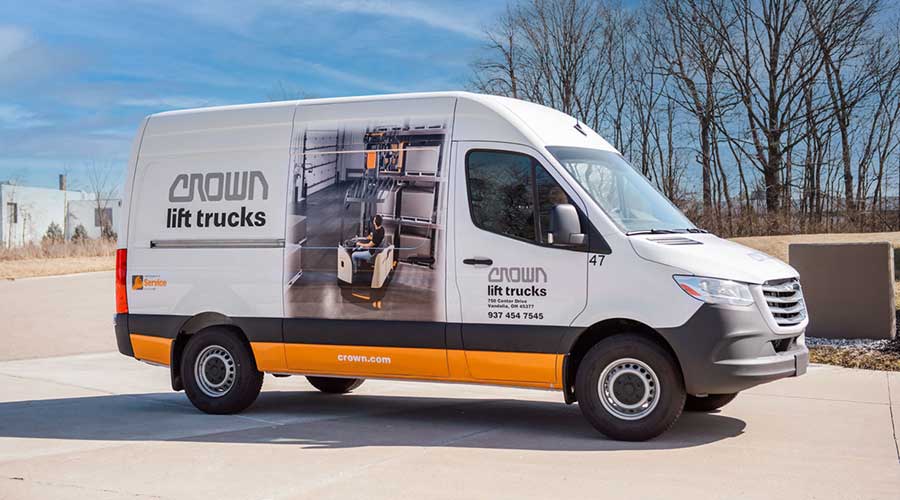Achieving Sustained Automated Forklift Performance

Automation is becoming more prevalent in today’s warehouses and distribution centers. If you’re considering some form of automation technology in your facility, you’re already looking at the upfront cost of purchasing automated forklifts, but you may also be wondering what it takes to maintain them?
It is a fact of life with vehicles. If it runs, it will need service and maintenance to continue running. With automation technology, this is a particularly important fact to remember. While we watch in awe, these incredible machines perform their designated tasks, we dare not forget that they require different kinds of maintenance, similar to their manual counterparts in some ways but above and beyond in others.
Fortunately, automated forklifts require much of the same maintenance as manual forklifts since they utilize the same batteries, wheels, tires and other consumable parts. They are also equipped with a number of sensors on and within the vehicle. So, in addition to performing maintenance as usual, it is also important to inspect and clean sensor lenses so the vehicles can properly interpret their surroundings. The use of automated forklifts also places more emphasis on maintaining the warehouse, such as keeping aisles clear of debris that can require manual intervention during operation.
All of these maintenance tasks may be handled by the same individuals who perform regular maintenance on your manual lift trucks. For these reasons, an automated lift truck can be easily integrated into your regular service and maintenance programs. There is, however, one area of maintenance that can be easily overlooked. Since operators typically perform pre-shift inspections for their assigned forklifts, this task may be neglected when using automated forklifts that don’t require traditional operators. It is important that the individual responsible for monitoring the operation of a group of automated forklifts also performs routine pre-shift safety inspections for each assigned vehicle so that maintenance issues can be proactively identified and resolved.
That seems simple, but there must be more . . .
You may be saying to yourself, “Okay, so it sounds like I have to maintain clear aisleways and clean sensors to ensure operational performance for my autonomous vehicle. Where does the additional, specialized maintenance and training come into play?”
It is crucial that your automated fleet is regularly inspected for any issues or needed repairs, and critical components are serviced per your equipment provider’s recommendations and guidelines. Your provider’s maintenance team has been trained to perform this type of inspection and maintenance. If you decide to use your in-house maintenance team, be aware that additional training is required to enable technicians to proficiently service the unique features of automated forklifts. The good news is that your vehicle provider can typically provide this additional training.
Damaged sensors must be replaced and calibrated to ensure the integrity of the automatic guided vehicle’s operation (AGV), an exercise performed by knowledgeable and trained technicians. The technician will also inspect and maintain the additional wiring and electronics integrated into the vehicle to enable it to function without an operator. This requires technical knowledge of the location, form and function of each component and the entire navigation system.
The effect of automated operation
Most automated vehicles are deployed to complete very consistent, repetitive tasks, often in secure locations of the warehouse. This consistency of performance and isolation can reduce the possibility of impacts and the associated damage they may cause but, at the same time, may actually increase hourly usage and the requirement for regular maintenance. By communicating regularly with your forklift provider, you also can gain insight into parts inventory and any supply chain issues that might affect your automated forklift. Communicating regularly with your provider allows you to accurately plan and prepare for when you should service a vehicle’s sensors and stock components based on parts availability.
As with your manual forklifts, you should document every maintenance issue that occurs with your automated vehicles over time, including the cost of each repair or service. Fleet management software, such as Crown’s FleetSTATS® system, can help facilitate this tracking exercise. Identify all the planned maintenance work orders and breakdowns within the year and determine the planned maintenance to breakdown ratio. You can get the average cost per model from your forklift provider to help benchmark your automated vehicle performance and use this information to help you identify trends, be more proactive about repairs and properly and efficiently address issues.
Tracking automated forklift health
Connected technology and forklift telematics can be a powerful tool to help ensure both manual and automated forklifts are performing as designed to support productivity and safety standards. This is especially important for automated forklifts, where the expectation is that they will be in near-continuous operation. A wealth of data can be gathered from forklift telematics systems, such as Crown’s InfoLink® operator and fleet management system, including data on equipment and battery status, performance and health, which can provide a better understanding of how the fleet is operating.
Telematics systems can provide another important benefit because operational data can easily be shared directly with your service provider. Without telematics, this data may only be available by accessing the information on-site in the AGV system traffic manager, preventing your service provider from accessing the data until they arrive on-site, which limits their ability to arrive with potential resolutions in mind.
Using data analytics, you can unlock the potential of all this information, including operational data, event codes and impact alerts. Currently, connected service technicians, armed with advanced technology and increased connectivity, are helping make forklift service calls smarter and more proactive.
Like all machines, automated forklifts require maintenance, both familiar and new. Understanding the unique requirements associated with automated forklifts is key to ensuring that they consistently perform as intended. With this knowledge and the help of an engaged provider, automated forklifts can be integrated into your application and your ongoing maintenance program.